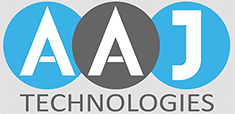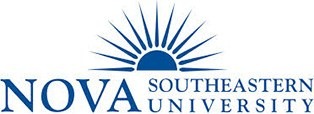“Oftentimes, the lack of a robust . . . assimilation process leaves the new employee confused and disoriented.” ~ Bill Conaty, former Senior Vice President of Human Resources at General Electric
We’ve all been there. New job. New company. New hire. First day at work. Now what? Well if the company is serious about keeping you and making sure you are successful, they will have a plan in place to set you up to thrive and flourish. And that plan should start before you ever arrive on day one.
The cost to get a new employee interviewed and hired is quite substantial, so it is imperative for the company to get you off to a fast, productive start. Leaving you to “find things out on your own” is one of the top reasons most new hires leave within the first six months, and then the company has to start all over again.
According to the Society for Human Resource Management (shrm.org), a new employee who attends a well-structured employee orientation program is 69% more likely to stay at the company for up to three years.
Onboarding has become a popular term in HR circles, and means “to assist and support (a new employee) in developing the skills, knowledge, attitudes, etc., needed to be successful in the job.” It is the process of helping new hires adjust to the social and performance aspects of their new jobs quickly and smoothly. Companies with a proper onboarding program find:
- Higher job satisfaction.
- Organizational commitment
- Lower turnover.
- Higher performance levels.
- Career effectiveness.
- Lowered stress
Speaking from my experience in the cruise industry, joining a cruise ship in a foreign port of call for the first time is nerve racking to say the least. There are so many first time experiences all happening at the same time that many new hires question if they made the right decision. Crew members from over 60 different countries speaking languages you never knew existed. Safety regulations needed to know before the ship ever leaves port. Getting a cabin, meeting a new roommate (from a different country), getting the proper uniforms, all in the first few hours. That’s in addition to getting to the country a day in advance and spending the night in a hotel and getting to the ship. It is the goal of HR and senior management to make sure these people are set up for success. As it should be in any company.
Onboarding starts before a new hire arrives at the office. Because the first day (and week) can be so overwhelming, it can begin as soon as a person accepts a new position. Standard paperwork can be sent to the new hire before the first day so it can be filled out in advance. A new hire employee handbook can also be sent in advance, along with a job description outlining roles and responsibilities.
Before day one, make sure the new hire knows such things as what sort of ID to bring, is a company computer provided or does the employee use their own, directions to the building, where to park (assigned parking?), dress code, where should they go upon arrival, etc. Make it easy for them, and show that you have given their arrival advanced thought and preparation.
To insure a new hire is successfully brought into the company, here are a few suggestions and tips to remember:
- Send an email to company employees welcoming the new hire. If it is a large company, send it to the division or department where the new hire will work.
- Have a checklist for all new hires so they know what to expect in the first 90 days.
- Day one should not be an endless amount of paperwork. It should be more social, getting the lay of the land and meeting key people.
- Assign a mentor or buddy for the new hire to ask questions.
- Try to have new hires join on the same day, even if they are in different departments. It will create a unique bond for the future.
- Have their workspace or office already set up. Make it personal with their nameplate and business cards already printed
- Have a company name badge or security pass prepared the first day so they feel like part of the company. Don’t make them wear a visitor’s pass for the first week.
- The first day orientation should include the company culture, values, mission and vision statements and core beliefs.
- Invite them to lunch on day one, and if possible, have different people take them to lunch the first week.
- Have a division, department or companywide organizational chart ready for them. If you want to make it extra special, have photos on those charts, not just names.
- Give a short tour of the facility, pointing out key areas (copy machine, bathrooms, break room, training room, etc.)
- Have senior management stop by for a short meet and greet within the first 48 hours.
- If they are using a company computer, have it set up by day one. The same thing applies to email addresses, as well as the phone system.
- Have the immediate supervisor or manager check in frequently during the first week.
- Get feedback from the new hire about the entire onboarding process. It could be after day one, week one, month one, or all of the above. What did they like, what could be improved? It will show you care.
- Make plans to give a 30 day review to make sure everyone is on the same page concerning roles, responsibilities and expectations. This can be repeated after 60 and 90 days. This review is different from what an annual review would entail.
The process of interviewing and hiring a new employee is time consuming and expensive. A company needs to have an effective new hire orientation that is welcoming, nurturing and embracing. The process should always be growing and improving, based on feedback, and should be an integral part of career development. Starting them off on the right foot has proven beneficial in so many ways to both the employee and the company. Make sure your company doesn’t spend unnecessary time, effort and resources finding the right person over and over again. Creating the right first impression will pay dividends for many years to come.









